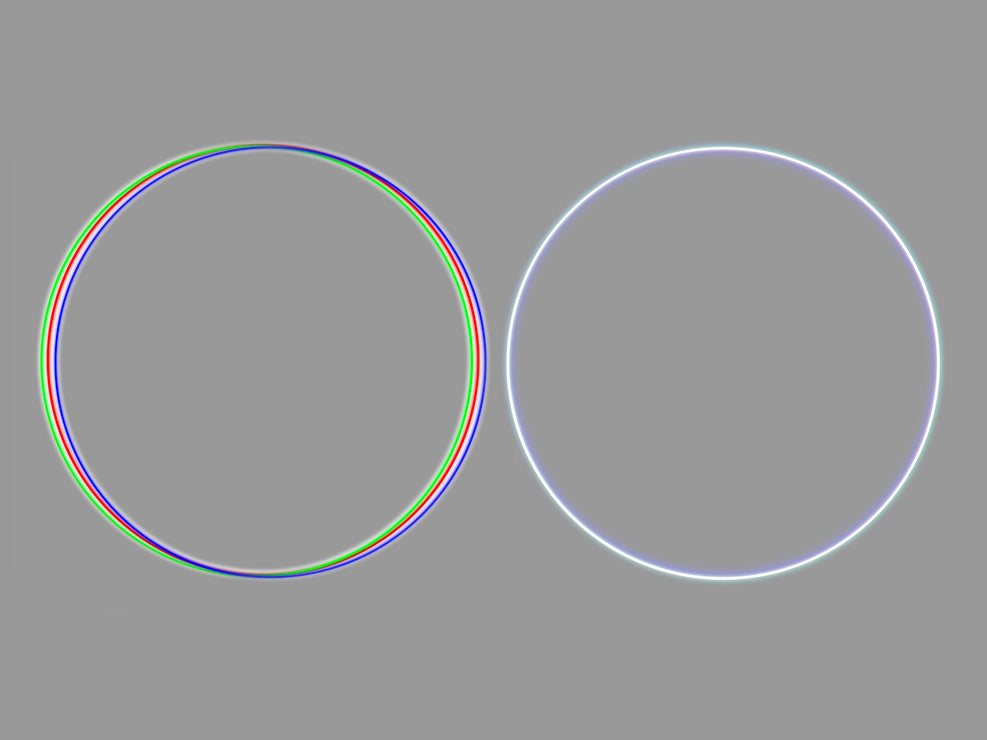Full spectrum laser
Light is made up of wavelengths of light where each wavelength represents a particular colour. The colour we see is a result of which wavelengths are reflected back to our eyes.
The wavelength of laser sources defines its output colour. Light from a laser is monochromatic, which means it only produces one colour. The colour mixture and the white balance seen by human eyes is as a result of combination of laser sources of different wavelengths. However, not all lasers can produce light of varied wavelengths. Example of this is laser pointers where only one wavelength is outputted, say red laser light (at around 635-660 nanometers).

Single colour laser pointer
Since the laser is monochromatic, how do we produce full spectrum of colours with lasers?
The primary colours of laser light are red, green and blue. Other colours of light we see are produced by mixing the primary colours in different proportions. This is how for example TV and visual display screens work. If you look at a screen with a magnifying glass you will be able to see that only these three colours are being used. For example, red and green colours are used to make the brain perceive the point as yellow.
Supposing you want to transmit a magenta colour, you can achieve that by combining colour red with blue, in a definite proportion. This ability to combine colours is what is being used to produce over 16 million colours known today.
That being said, the laser spectrum is a collection of wavelengths. Full spectrum laser, like one of the KVANT Spectrum series systems, are laser show projectors with the capabilities of producing all wavelengths of colours within the visible spectrum region of 400nm to 700nm. In simple terms, the full spectrum lasers can emit full range of colours, like the blue, from 405 nm to 465 nm wavelength; green, at around 532 nm, and red colours from 635 nm to 660nm. By mixing red, green and blue together in correct ratio you get white.

By mixing red, green and blue lasers we get full spectrum laser and also white-light laser
The technology behind the full spectrum lasers lies in different types of laser modules used inside laser show systems. A laser diode is a semiconductor device similar to a light-emitting diode in which the laser beam is created at the diode’s junction; these are used in diode laser modules.
Spectrum lasers - full color systems by Kvant
KVANT’s patented Diode Laser technology and well known OPSL technology are widely used in full spectrum lasers. Other important parameters are the beam divergence, shape of the laser beam and laser beam profiles of each colour within the system. The analogue adjustment of all laser colours inside the full spectrum laser allows you to mix the colours together in any ratio = create any desired laser colour. The KVANT Spectrum 20 is an example of a laser that utilise such technology to produce full spectrum of colours.
The ability of lasers to produce a broad range of wavelengths has opened so many pathways and dimensions in which this type of lasers find numerous applications. Full spectrum lasers are widely used in outdoor events, as well as indoor shows, where they are used to create beautiful structures in mid-air to give the “Star Wars” excitement, or could be used to display client’s logos, animate their products, entertain, or simply tell a story.
No matter your area of application, KVANT lasers will always offer the best solution to give your show the beauty of lights and colours.








